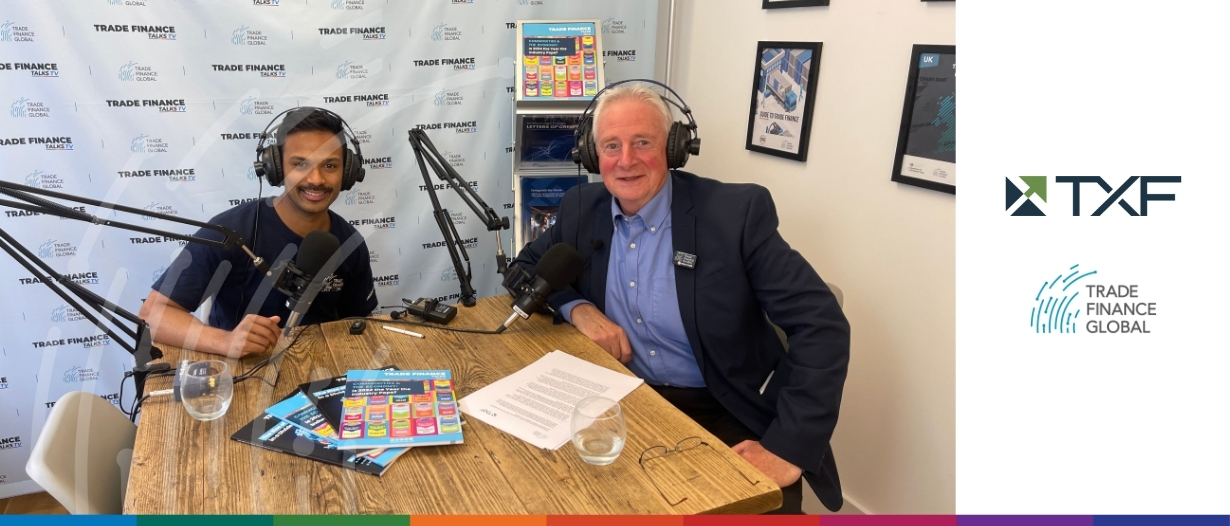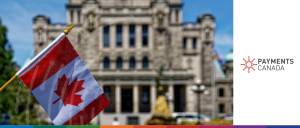Estimated reading time: 15 minutes
Listen to this podcast on Spotify, Apple Podcasts, Podbean, Podtail, ListenNotes, TuneIn
It is easy to think that 2014 was a long time ago, and the world was very different.
China has grown substantially during this period, with its GDP rising from $10.48 trillion in 2014 to $17.52 trillion in 2023, a 67% increase. In 2014, the United Kingdom was still two years away from voting to leave the EU, and TikTok was still just an idea, as it was not launched until 2016.
While there are differences economically and socially, in reality, historical events tend to repeat themselves. In 2014, Russia invaded and annexed Crimea, sparking deep international concern for the security of the entire country. A few months later, Israel and Palestine engaged in a seven-week-long conflict, as the United States and Egypt pushed for a ceasefire.
While the world looks very different today than it did ten years ago, it also very much looks the same. The same can be said about commodity finance. While some circumstances may have changed, many of the problems we face have similarities to those of 10 years ago.
To discuss the changes of the past decade, what might come in the next 10 years, and TXF’s Global Commodity Finance Conference in Amsterdam on 22-23 May 2024, Trade Finance Global’s (TFG) Deepesh Patel (DP) spoke with Jonathan Bell (JB), Editor-in-Chief and Director at TXF.
________________________________________________________________________
DP: Let’s start by talking about how commodity trade financing has changed over the last ten years and how it may continue to change over the next decade. Many banks have exited the market in recent years. Likely due to frauds, a shift of strategic priority towards ESG and return on equity. What are the impacts of this retreat?
JB: There has been a massive change in the number of banks involved in commodity trade financing from 2014 to 2024.
Through this period, many banks, particularly investment banks, have been opportunistic and jumped in and out of the sector when it suited them. Several other regular players jumped out of the soft commodity sector, largely due to the increased risk – accentuated by climate risk.
There has also been a realignment by banks regarding which commodities they want to finance, which led to many pulling out of financing soft commodities (agri-business) between 2011 and 2015.
However, the big changes have largely been caused by fraud and other such activities. This is not new – such cases go back many years – but between 2014 and more recently, certain banks and traders lost a lot of money in some high-profile cases. For example, the Qingdao and Penglai warehouse frauds of 2014 in China. There is also the notorious case of trader Hin Leong in Singapore in 2020.
A competitive world: Winners and losers across the industry
DP: Who are the winners and losers?
JB: The real big names that have exited the sector are ABN AMRO and BNP Paribas, albeit they still have some key clients who deal in commodities. Many other banks have retrenched to cherry-picking deals or the so-called misnomer ‘flight to quality’ syndrome!
With banks exiting or pulling back, the winners could well be the many more non-banks that are now involved, such as funds and capital management entities (e.g. Drumlin, Horizon, INOKS, Qbera, Tradeflow, etc.). There has also been the rise of smaller, specialist, localised/regional banks that have come in to fill the void left by mainstream banks.
Most mainstream banks that are still involved no longer support coal/coke financing, and many are trying to get out of being seen financing crude oil. Again, specialist traders have become big winners in coal and crude oil trading. Reputational risk is being pushed heavily by bank boards. However, with the requirement for oil and gas for decades to come a realistic approach is also being taken by most financiers.
There is also now a much bigger push by banks to be seen as involved in sustainable financing – to be aware of environmental, social and governance (ESG) considerations and also mindful of the UN’s 17 Sustainable Development Goals (SDGs).
Overall, another winner is greater attention to sustainability and governance. It is changing financiers, as well as producers’ and traders’ attitudes, more quickly than others. So the sector is an overall winner here.
Law firms, of course, have been winners because they have picked up a lot of work in sorting out the mess of warehouse receipt frauds, of which some cases have been going on for years. But there are also many other commodity deal workouts or restructurings that keep legal teams in institutions busy, as well as many of the big law firms themselves.
It is also worth mentioning the change that has taken place with private insurers. Since the COVID-19 pandemic, several key insurers servicing the commodity sector have also pulled out of or pulled back from, the commodity market – citing increasing losses and not enough reward for the risks involved. This has led them to what may be considered safer territory, such as deals that may be backed by developmental finance institutions.
It should also be noted that because of the frauds that have taken place big commodity centres such as Singapore, for example, have introduced a centralised Trade Registry to try and eliminate potential frauds. So, another winner here could be the push for greater scrutiny of transactions and also the need for more electronic trade.
With the high-profile frauds, which hit the sector over the past ten years, the overall cost of finance went up for the smaller traders and producers, so they could well be considered a loser group in this case. Larger traders claim their cost of finance did not necessarily increase.
DP: The underlying structures are changing too, right? Although unsecured finance represents nearly ¾ of CTF volumes, secured debt has seen an uptick in the past two years. What’s happening, and is this due to a ‘flight to quality’ for structured commodity finance?
JB: Yes, indeed. When things have gone wrong in commodity finance, it has often been because deals and arrangements have become too loose. There has been a significant realignment to more structured transactions. Properly structured commodity finance transactions rarely encounter problems that cannot be dealt with sensibly and practically.
You are right, unsecured commodity trade finance still represents the largest segment of the sector – but an increasing number of deals will now have added structured elements. Additional security and more covenants are coming into many transactions that had previously been unsecured. At the same time, we are seeing more pure structured commodity finance – for example, pre-export finance, pre-finance, borrowing base, and reserve base lending.
In addition, other trends are happening on the lending scene – most of the big traders are still able to secure very sizeable standard revolving credit facilities (RCFs). Still, a much larger proportion of these are now tied to ESG criteria, meaning that the loan or parts of the loan cost less when it adheres to pre-determined environmental, social, or governance requirements. Last year, for example, we saw a high profile, very well-structured $785 million ESG-tied borrowing base transaction with metals trader IXM supported by some 14 international banks.
It should also be mentioned that many big traders are also actively diversifying their sources of finance. As an example, Singapore-based trader Olam Agri in early April 2024, secured a Murabaha-financing (Shariah-compliant) amounting to $625 million from a group of diversified investors from the UAE, Malaysia, Singapore, and Hong Kong.
And in June, Trafigura secured a Samurai loan equivalent to $821 million in March from some 28 institutions, including a number of new investors. The Samurai loan route was established a few years ago by Trafigura and others to diversify away from other more traditional loan routes out of Europe, the USA, and Singapore.
Pushing through a turbulent situation
DP: How is the fragmentation of the global political order influencing trade routes and commodity markets? Could you elaborate on the roles of countries like India, China, and Turkey in shaping the future distribution of Russian commodity exports, and the rising phenomenon of ghost traders?
JB: We are living in strange and often very difficult times, which in turn has led to this very strained fragmentation of the global political order. In particular, the two biggest economies – the USA and China – are competing for global supremacy, both economically and technologically, not to mention militarily.
China, as the huge producer it is, has always been the giant sponge globally for raw materials (even though it is also a huge producer of many important commodities). However, China’s overall role is vital within commodity-based global trade.
Russia is, of course, hugely influential as a critical producer of a vast range of commodities – from oil and gas to nickel, copper, gold, potash, diamonds, and fish – you name it! So, Russia’s invasion of Ukraine in February 2022 has been disastrous for Ukraine and Russia and overall global commodities supply – even though some nations don’t see it that way and are using the opportunity to bolster themselves in various ways. The negative impacts of this invasion by Putin and supported by his allies cannot be underestimated.
On the energy front, the disruption has been immense – particularly so for Europe as European countries had always been primary consumers of Russian gas and oil. Russian oil has consequently had to find new routes for export and new markets – even though some Russian oil still does end up in Europe through new routes.
China certainly saw this as an excellent opportunity to secure vast quantities of oil and gas at considerably discounted prices. India, too has used this whole mess to push its weight on the global trade stage and act as a conduit for Russian oil, as well as bolster its overall trade relations with Russia.
Turkey has also become a key route. Some established traders have taken advantage here. Beyond that, there is also a raft of so-called ‘ghost traders’ moving cargoes of oil even directly out of Russia shipped at heavily discounted prices on a range of tankers (‘ghost vessels) to destinations where that oil can then be trans-shipped to an end-user or refinery.
DP: With the increased sanctions regime and ongoing global conflicts, how are commodity trade and transportation being reshaped? What strategies should participants adopt to navigate this landscape and ensure deal security amidst these disruptions?
JB: The increased sanctions regime, ongoing global conflicts, and the overall fragmentation front have had and continue to have a significant impact on international commodity markets and transportation. We initially saw energy prices surge because of the Russian invasion of Ukraine. And, of course, Russia, along with Saudi Arabia, essentially control OPEC+ to ensure their cuts in production keep the oil price where they want it – Brent is currently at around $90/barrel.
The energy problem has allowed the USA, in particular, to increase significantly its supply of gas (LNG) to European markets. Other countries with surplus supplies, such as Oman, have also gained ground.
On the soft commodity front, many countries had to pay a lot more for food staples such as wheat, barley, maize and vegetable oils due to the disruption to Ukrainian exports to key markets in the Middle East and Africa.
Russia now exports more of its own grain to these markets and also the grain it has stolen from Ukraine. At the same time, this has provided other big soft commodity producers – such as Argentina, Brazil, the USA, Canada, and Australia – with the opportunity to move into new markets or provide increased supplies to established markets.
Globally, we have seen shortages of particular commodities lead certain governments to introduce export restrictions on their own produce to ensure security of supply to their own populations and industries.
Transportation was, of course, heavily disrupted during the pandemic – particularly for container goods, but this also includes commodities as many more commodities are now containerised rather than carried on bulk carriers – for instance, global sugar.
However global conflicts are influencing disruption to transportation routes. Most noticeably, transport through the Suez Canal. Transport costs have skyrocketed as many vessels are taking the longer route around Africa to get to destinations. The Panama Canal has been badly impacted by drought, so passage has been limited and is much more expensive accordingly.
Some big traders, in particular, have tried to limit the added costs by maintaining or expanding their own shipping fleets. This can have huge benefits as it also allows them to control where and when vessels are at any one time. On another aspect, some traders are helping in the decarbonisation of the shipping sector by converting to different and more environmentally friendly fuel sources.
It should also be mentioned, but almost probably goes without even saying, that on the sanctions front, lawyers have been big winners. There are many fraud cases taking place today in which law firms are engaged.
A vast industry requires a global effort
DP: With the global push for electrification escalating demand for key metals such as copper, nickel, lithium, zinc, and critical minerals like germanium and rare earths, how are commodity traders planning to address these changing market needs? Also, how are governments and agencies ensuring resource security, especially in light of their increasing reliance on ECAs for securing essential supplies?
JB: The energy transition and electrification drive have certainly driven the push to secure critical minerals and metals. However, this has not always been mirrored in the price of certain commodities over the past few years, and copper is a case in point. However, we are almost at $9,500 per tonne for copper, so things are picking up.
And with low stocks globally, some predict copper will be at $10,000 by year-end. Most analysts agree that because of the requirements of the energy transition and electrification, there is likely to be a significant deficit of at least 4 million to 5 million tonnes emerging for copper by the end of the decade. And this has been exacerbated by the underinvestment in mining.
China, as it produces around 60% of global EVs, is key. Global electrification – with a requirement for much more cabling is also crucial.
And, of course, traders are essential here, as they fully recognise the requirements of the market. Some traders are even increasing their investments in mining developments, for example, Trafigura in the Democratic Republic of Congo (DRC) with involvement from Burundi-headquartered Trade and Development Bank in a $600 million financing for the Mutoshi copper-cobalt deposits in November 2022.
We are also seeing ECAs and other DFIs getting more involved in financing commodity and raw materials supply, and this has been led by national and regional interest and the need for the security of raw materials – predominantly metals and energy – for domestic industries. China Exim has been on this case for some time, with support for its strategic reserves.
Still, Western agencies such as Japan’s JBIC, Korea’s KEXIM, Italy’s SACE, Canada’s EDC, Australia’s EFA, and Germany’s Euler Hermes, in particular, have become very active – and all working closely with global traders to secure energy or raw materials supplies.
Euler Hermes came up with an $800 million financing for Trafigura to supply non-ferrous metals to the German industry in late 2022. The agency has also provided, in principle, some $600 million to the Arafura Nolans rare earths project in Australia. EKN and SEK of Sweden also came up with $208 million in ECA financing for the Kamoa-Kakula (Ivanhoe Mines) copper mine in the DRC in 2022.
DP: What does all of this mean for international commodity trading companies? What is their future role (big and small) in commodity trade finance?
JB: Well-established international commodity trading companies already run the show in the supply of major commodities. Consequently, they are magnets for financiers and can control their access to affordable finance.
This scenario will only get stronger as we move into a world where the security of supply is paramount. The strength of many trading companies also allows them to buy from producers at prices and volumes they command. In many cases, traders bring already well-structured deals to the bank/non-bank market for financing or better refinancing.
It is no wonder they are crucial to global commodity trade and essential to global commodity activity. Vitol made profits of $13 billion last year (2023), and Trafigura, profits of $7.4 billion – for example. The ability of prominent traders to raise finance can be expected to increase.
There are suggestions in the market that overall commodity finance levels are declining, but one must also consider that finance to big traders is increasing. In turn, while smaller traders will still struggle to raise finance, one has to realise that the big traders, when working hand-in-glove with some of the smaller traders on selective deals, will themselves be financing smaller traders. However, the cost of financing for smaller businesses has undoubtedly increased.
Digital adoption: Making real gains in the commodity world
DP: Digitalisation. A lot has happened, but what are your thoughts on the impact of MLETR adoption, the push towards 100% eBL usage and the acceptance of digital trade documents on commodity trade finance?
JB: Overall, in commodity trade finance, there has been a big wake-up call that better documentation is required, and that is aligned with a push to electronic documentation to move away from the vast paper trails where falsifying documents is much easier for fraudsters to orchestrate. Digitalisation in the commodities markets can potentially reduce fraud by making it easier to track transactions and scrutinise documents.
MLETR (the Model Law on Electronic Transferable Records) was introduced by UNICTRAL in 2017, and the UK played a big part in this as it was the leader of the G7 that year. Further adoption within G7 countries is at different stages, with the US being quite advanced, but it needs to be used more thoroughly.
The same applies to Germany. France has produced a white paper to help implement it. Outside the G7, Singapore and UAE have adopted it. India and China both have a strong interest in the implementation, with China working with the ADB towards it.
Banks see MLETR as making trade and commodity finance more efficient, but it also helps with compliance and governance. Overall, MLETR represents a significant milestone for trade digitalisation.
The overall environment for accepting digital trade documents, including eBLs, improved considerably through the pandemic. However, the take-up across the sector still has a long way to go, and further impetus is needed. Big trading companies are leaders in helping this transition.
DP: Before we wrap up, I wanted to mention that TFG is delighted to be a media partner of TXF’s Global Commodity Finance Conference in Amsterdam on 22-23 May 2024. Why are we celebrating the number 10, and what can we expect?!
JB: Well, last year was the 10th year since the start-up of TXF, so we are now into our 11th year – but crucially on the commodities front, our Global Commodity Finance Conference in Amsterdam on 22-23 May 2024 is the 10th one we have done in the city. So it will be a celebration!
Along with that, we will have an anniversary black-tie dinner on the evening of 21 May – and this will also incorporate the TXF Commodity Deals of the Year for 2023, along with industry awards and some other special recognitions. Over the next three days, we anticipate that over 400 people will come to the event, including high-profile people from producers, traders, bankers, financiers, law firms, insurers, advisers, and various logistics companies involved in commodity trade and finance.
We will have great presentations and discussions and plenty of networking, relationship-building, and deal-making time.
It’s going to be fun, and I, for one, am really looking forward to it!





























